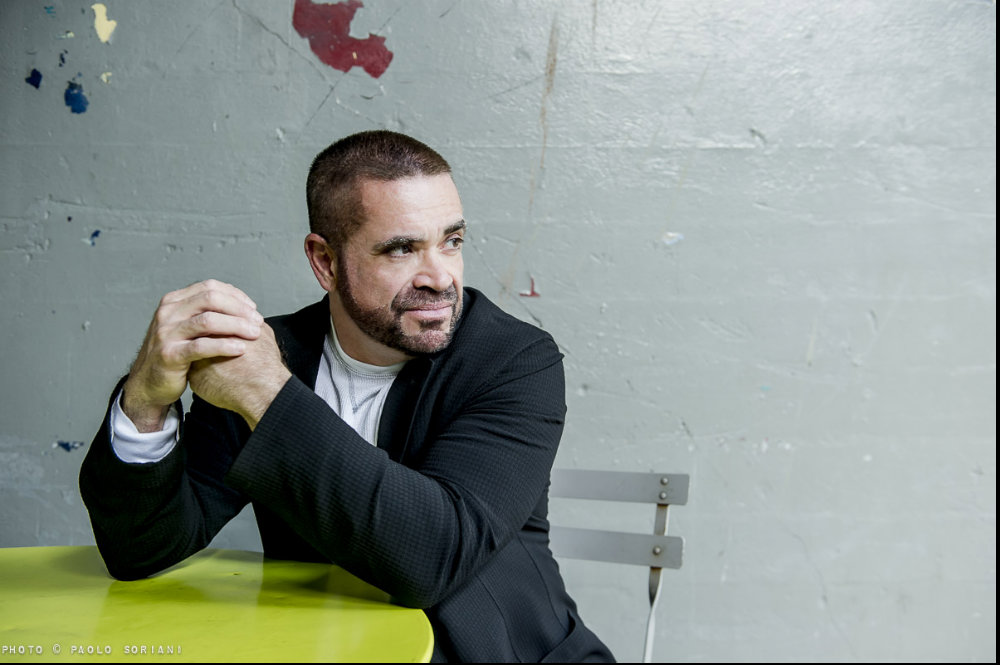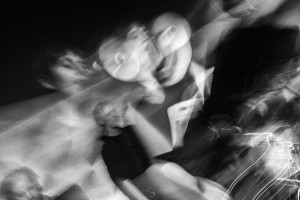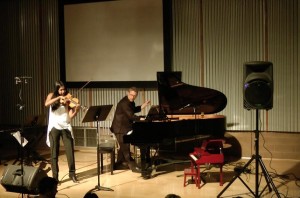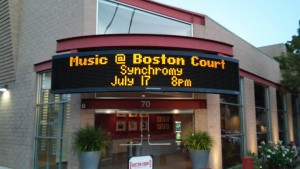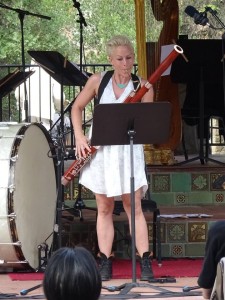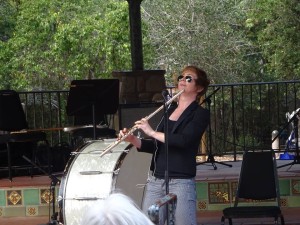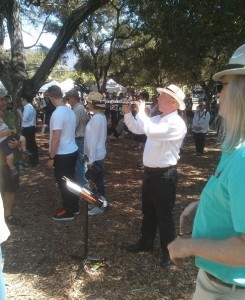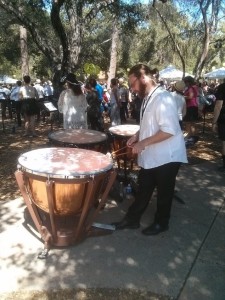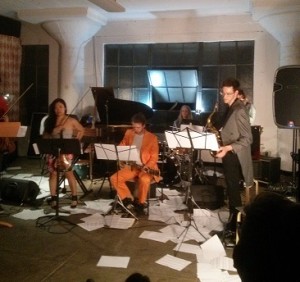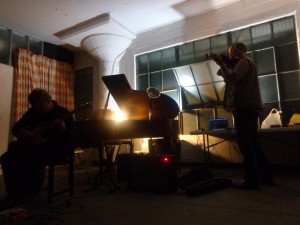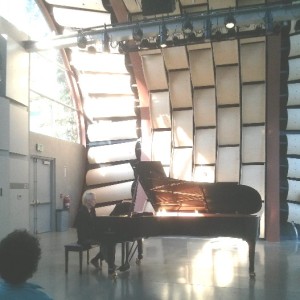 The Dog Star 11 series of new music concerts continued on Sunday, May 31, 2015 at The Wild Beast performance space on the campus of Cal Arts. Reinier van Houdt, coming all the way from the Netherlands, was on hand to perform Green Hour, Grey Future (2014/15) by Michael Pisaro. An attentive audience sat quietly in the sun-splashed Wild Beast as the 73 minute-long work for solo piano and electronics gracefully unfolded.
The Dog Star 11 series of new music concerts continued on Sunday, May 31, 2015 at The Wild Beast performance space on the campus of Cal Arts. Reinier van Houdt, coming all the way from the Netherlands, was on hand to perform Green Hour, Grey Future (2014/15) by Michael Pisaro. An attentive audience sat quietly in the sun-splashed Wild Beast as the 73 minute-long work for solo piano and electronics gracefully unfolded.
The title of this piece comes from a poem by Susan Howe titled “Articulation of Sound Forms in Time.” The third section of that poem, “Taking the Forest” contains these lines:
Eve of origin Embla the eve
soft origin vat and covert
Green hour avert grey future
Summer summon out-of-bound shelter
The line “Green hour avert grey future” suggested to the composer a long, gradual transition from the vibrant green of the living present to the “grey” uncertainty of a distant future. Michael Pisaro writes: “So my idea was to take this hour for the piano and have it tilt ever so gradually from green to grey in its own particular fog-like way.”
The piece proceeds in a series of seven minute units that gradually increase in density, although in an artfully indirect manner that includes tone sequences, harmony, melody and loudness. The death of Mark Trayle, a close friend of the composer, also added a solemn dimension to the concept of transition in this work. Green Hour, Grey Future is dedicated to Reinier van Houdt and written in memory of Mark Trayle.
The piece opens with a single sustained piano note in the lower register. There is a pause, and the same note repeats twice more, followed by a longer pause. The note repeats twice again but this time with a bit less space between. After a somewhat shorter pause, the same note was repeated three times and a soft electronic matching tone was heard from the speakers. The electronic tone was sustained and smooth, although binaural beating could be heard at times – and the piano was silent. A long stretch of silence then concluded the sequence.
The opening sections proceeded in this way, with the opening piano note or notes rising in pitch and the matching electronic tones typically increasing somewhat in volume. Soon three or more notes and were played consecutively, followed by the electronic humming and another long pause of silence. The feeling was peaceful and calm, but anticipatory – like waiting for a distant signal. The slowly unfolding patterns in these early sections worked to focus the attention of the listener, and each new sequence seemed to add another piece to an emerging picture.
Very gradually the piece increased in complexity – a chord might be heard, or there were two or more consonant electronic pitches sounding together. The number of notes from the piano increased to something like a series of short phrases and finally becoming a steady stream. The piano and electronic tones now overlapped while the tempo – although never rushed – became incrementally faster. The piano notes, now played in the middle register, began to weave around the electronic humming in the background to produce a wonderfully warm mix of melody and sustained tones.
At this point a low percussive pinging sound was heard from the speakers turning the mood noticeably darker. The piano melody also took on a disconcerting feel as the louder, percussive electronics contended for attention in the foreground. This gloominess, however, gave way as pitches in the piano and electronics rose briefly to more optimistic levels. Bell-like tones from the speakers and a light tinkling sound added a mystical feel.
Before the warmer feel could fully establish itself, however, a solitary low starting note from the piano and a sustained low humming in the electronics recalled the beginning of the piece, now with a touch of menace. The piano sequences seemed to meander and drift while a low, rough rumble from the electronics overwhelmed the texture at times. This combination continued along for several minutes with the electronics clearly predominating. In the latter sections of the piece the piano continued its quiet, uncertain melody while the sounds of running water, birds, rain drops and the roar of an overhead jet were heard from the speakers. The piano notes finally slowed, and the piece came to a close.
In the course of 70 minutes, Green Hour, Grey Future carefully unfurls its beguilingly slow transition from spare simplicity in the opening, through a warm optimism in the middle sections and into the fog of an indeterminate future at the close. The electronics and piano were nicely matched in this performance, with the colors and moods most vivid in the middle sections. Reinier van Houdt, whose cool temperament and formidable powers of concentration combine so well, played this piece to perfection. A look at the score afterwords showed the sequences of notes on the staff marked with the timing in minutes, and Reinier used a stopwatch at the keyboard to mark his way through the piece.
Reinier van Houdt was planning to stay in California for a few more days so that a recording of this piece could be made. Watch for Green Hour, Grey Future – it will be worth a listen.

